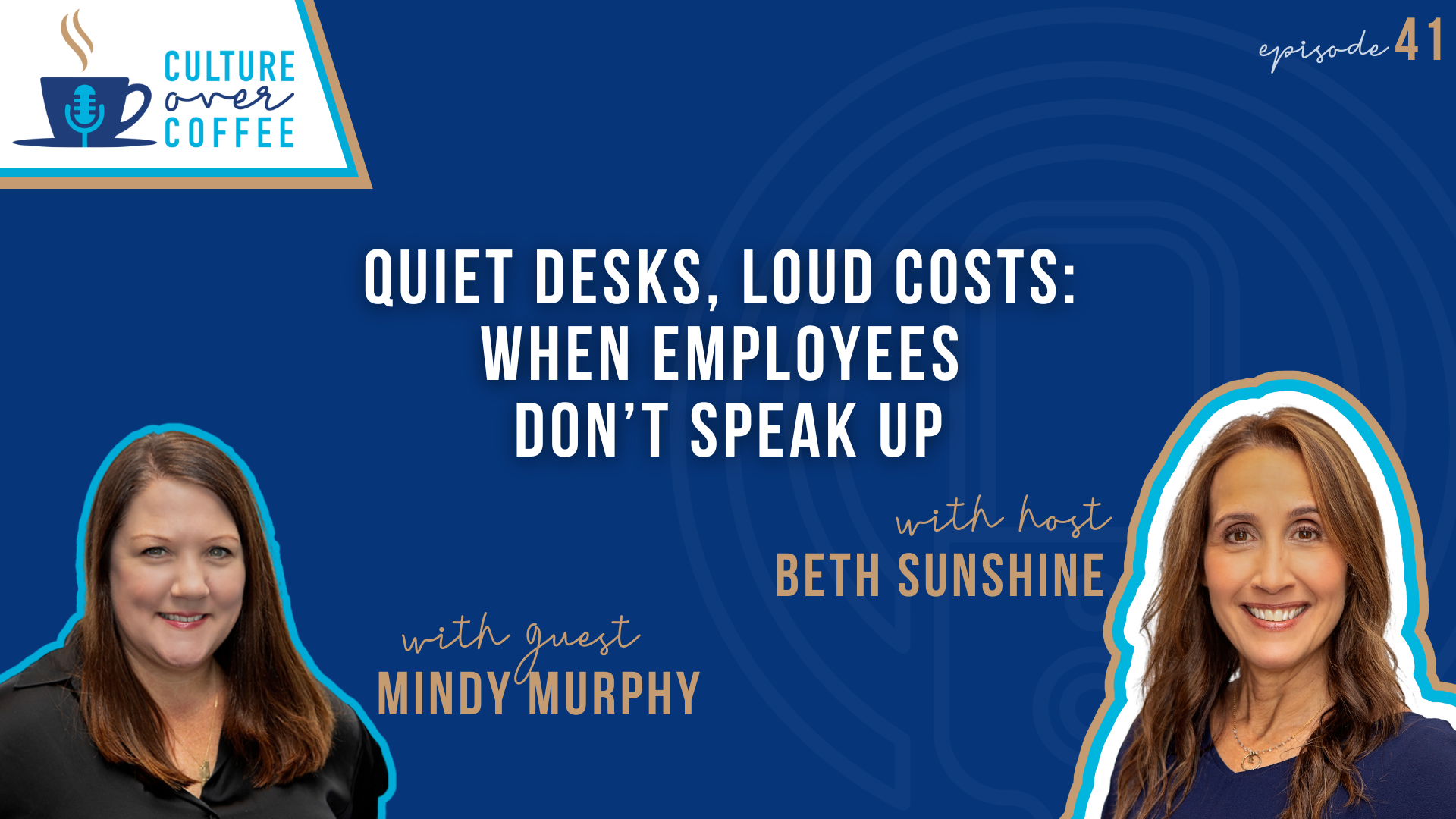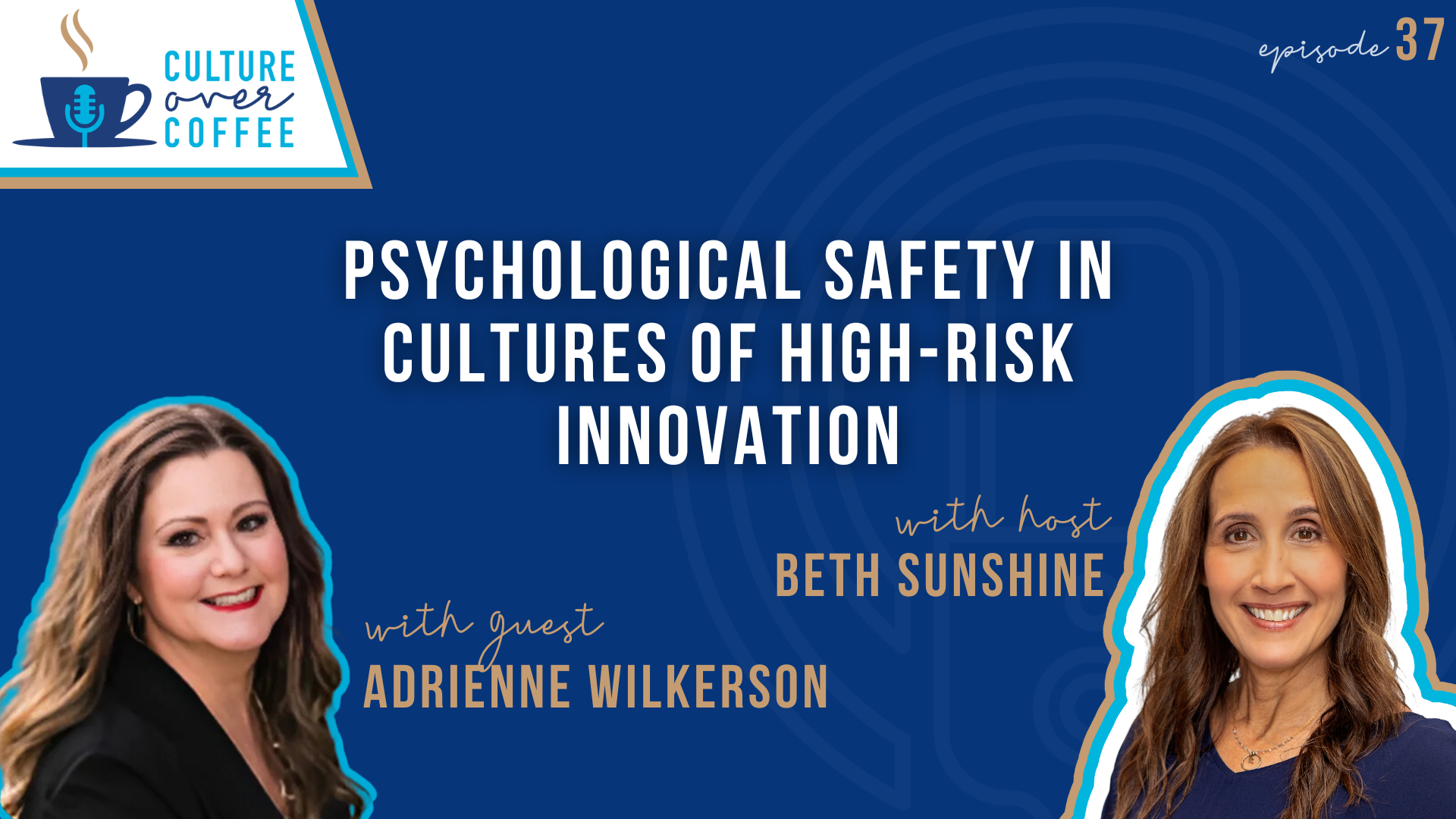
The term psychological safety may sound familiar to you. Recently, it’s been frequently touted as highly important in the workplace. Similar to buzzwords like burnout and quiet quitting, you’ve probably thought to yourself, “Yeah, I’ve got it under control.”
But have you ever really taken the time to understand what psychological safety is, why it’s important, and the overall influence it has on the culture and engagement of your team? Psychological safety isn’t just “fluff.” It has a direct impact on your bottom line.
What is psychological safety?
Simply put, when you have psychological safety on a team, people feel comfortable being themselves. Psychological safety is a term coined by Harvard Professor Amy Edmondson.
It’s a shared belief held by members of a team that they won’t be embarrassed, rejected, punished, or humiliated for speaking up. Team members can openly voice ideas, questions, concerns, or mistakes.
Why is psychological safety important?
Google went on a two-year mission to discover and define the perfect team. They named the study “Project Aristotle” as a tribute to Aristotle’s belief that the whole is greater than the sum of its parts. During this study, Google focused on 180 teams and the people on each of those teams to better understand what makes a team effective. From Project Aristotle, they discovered that the number one factor in a team’s success is psychological safety.
A workplace with high psychological safety can foster creativity, innovation, and learning. It can encourage employees to share their ideas, experiment, and take risks. It can also lead to better problem-solving and decision-making, as diverse perspectives and opinions are heard and considered.
What happens when psychological safety is absent?
In 2017, the 737 Max was Boeing's newest and most technologically advanced aircraft, designed to be more fuel-efficient and cost-effective than previous models. Naturally, the demand for this aircraft was high. The pressure on factory teams to meet production deadlines was consistent throughout the production process and steadily increased over time.
As pressure increased, so did troubling production issues. Equipment delays led to backlogs on the production line, quality defects went up, and the number of overtime hours employees logged continually surged. Frontline managers reported they felt personally attacked when they weren’t meeting deadlines, which pushed them further towards quantity, not quality. Before long, several safety issues arose.
The frontline managers who were brave enough tried sharing their safety concerns, but they were punished for doing so. Some even reported a fear of losing their jobs. This discouraged others from coming forward and sharing their concerns. Consequently, the safety issues remained unresolved.
In October of 2018, a Boeing 737 Max airplane flying out of Indonesia and crashed, killing all 189 people on board. Five months later, another 737 Max crashed in Ethiopia, killing another 157 people. Frontline managers testified they were confident these crashes could have been prevented, simply by cultivating an environment where everyone felt safe to speak up and everyone’s opinions were valued – an environment of psychological safety.
Whether or not you work in an industry where mistakes have disastrous consequences, psychological safety is a vital workplace ingredient. A lack of psychological safety can lead to a toxic work environment. Employees who don’t feel safe to express their thoughts experience stress, anxiety, and higher levels of burnout. They’re also less engaged, less productive, and less likely to collaborate.
How can you measure your team’s current level of psychological safety?
If your employees tend to stay silent, avoid conflict, or withhold their opinions, it could be a sign that your workplace has low psychological safety. To help measure your team’s current level of psychological safety, start by asking yourself a handful of questions:
- Do your team members feel comfortable speaking their minds?
- Can they safely take moderate risks?
- Are they confident their ideas and voices are valued?
- Do they feel safe admitting mistakes?
- Are they recognized for their unique talents and skills?
Be completely honest with yourself. It isn’t enough to answer these with an “I think so” or a “most of them do.” In order for psychological safety to be impactful, the answer has to confidently be a “yes” for every question and every individual you manage.
Once you’ve answered these questions yourself, consider asking your team members the same ones. Encourage them to rank their answers on a scale from 1-5 (5 being the highest) and identify the areas needing the most improvement. From there, set specific goals to increase the psychological safety of your team.
How can you increase psychological safety on your team?
Increasing the level of psychological safety on your team isn’t something that happens overnight. It takes consistent effort, and it’s never something you can “check off of your list.” It’s always changing and evolving based on the actions and interactions of everyone on your team.
As a manager, you set the tone. Others will naturally follow your lead, whether you (or they) realize it or not. Here are five things you can do to ensure you’re establishing a strong level of psychological safety on your team:
1. Earn trust.
In Engage 2023: The Company Culture Report, we learned that a team member’s trust in leadership is highest when they first join a team. Over time, trust begins to dwindle. Whether leaders realize it or not, they’re somehow compromising the trust of their team members. Trust is one of the most difficult things to regain once it’s lost.
There are two types of interactions: trust builders and trust breakers. For example, a trust builder is always following through and doing what you say you’re going to do. A trust breaker is failing to follow through on your promises. Avoid trust breakers by being honest in your interactions with others and openly admitting mistakes.
2. Be open to feedback.
Feedback isn’t a one-way street. It’s a loop. Leaders should frequently provide feedback to their team members, but just as frequently receive feedback from their team members. Invite everyone to be honest with you, ask for suggestions for improvements, and learn how you can best support each individual.
Not every piece of feedback you receive will be positive – just like the feedback you provide to your direct reports. Negative feedback can sometimes be difficult to receive. If you find yourself struggling, keep this mantra in mind: How can I grow if I don’t know?
3. Exercise empathy.
Sympathy is understanding things from your own perspective. It’s an emotion you experience in response to someone’s feelings. For example, saying “I’m sorry” is sympathetic. Empathy is going beyond your emotional response and making the effort to understand someone else’s feelings, perspectives, and experiences. As the cliché goes, "walk a mile in someone’s shoes.” It’s taking the time to appreciate someone’s vulnerability and being vulnerable with them in return.
Always speak human to human. Consider that the person you’re speaking to has beliefs, hopes, anxieties, and opinions, just like you do. Speak to them with the compassion you would expect others to have with you.
4. Replace blame with curiosity.
Research shows that blame and criticism lead to defensiveness, which negatively escalates a conversation. The alternative to blame is curiosity. Curiosity is the springboard for learning and understanding. If you believe you already know what the other person is thinking, then you’re not ready to have a conversation.
It’s never safe to make assumptions, and it can be easy to play the “blame game” when you lack full understanding. Instead, when people have the desire to learn more, they are more effective. Ask genuine questions to gain insight into diverse perspectives and seek understanding. Consider stating a problem as an observation using a neutral tone and engage your team in exploring solutions together.
5. Be humble.
Author Rick Warren said, “Humility is not denying your strengths; humility is being honest about your weaknesses.” Establishing humility involves acknowledging mistakes, asking for help, and accepting feedback from others. After all, your team members have valuable insight that can lead to growth.
It’s critical to understand that your team and their opinions are just as important, if not more important, than your own. The path to humility could start by saying something like, “I’ve hit a roadblock and may need to go back to square one, so I’d like your input,” or “I’ve made a mistake, and I wanted to let you know right away,” or simply, “I need help figuring this out.”
Conclusion
PhD Torey Hayden once said, “Safety is the most basic task of all. Without a sense of safety, no growth can take place.” Psychological safety is crucial for a healthy workplace. With time and effort, you can create an environment where everyone feels safe, valued, and empowered to succeed.
It’s time to take action! You can begin increasing the level of psychological safety on your team right now. Ensure people know it’s okay to speak up, share feelings, state opinions, and make mistakes. Use vulnerability with your team and admit when you’re feeling overwhelmed. Share mistakes you’ve made and lessons you’ve learned. And as your employees begin opening up to you in return, show empathy and truly listen to what they have to say.











LEAVE A COMMENT